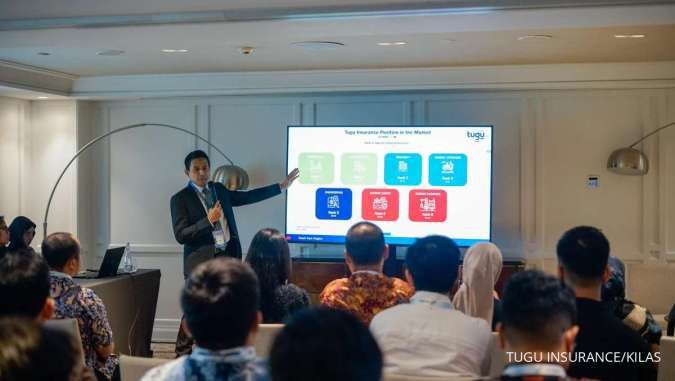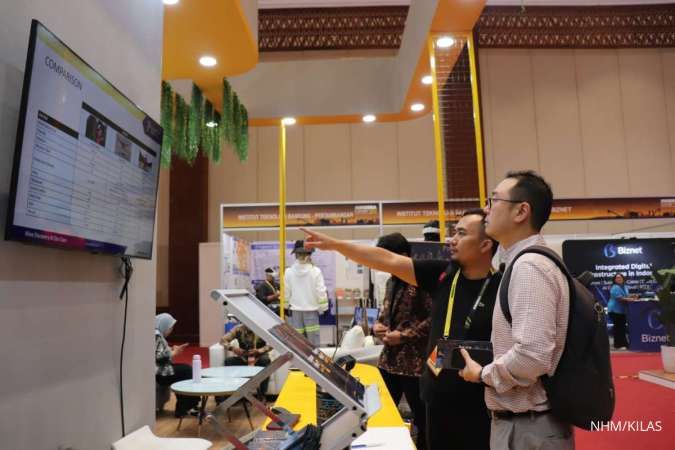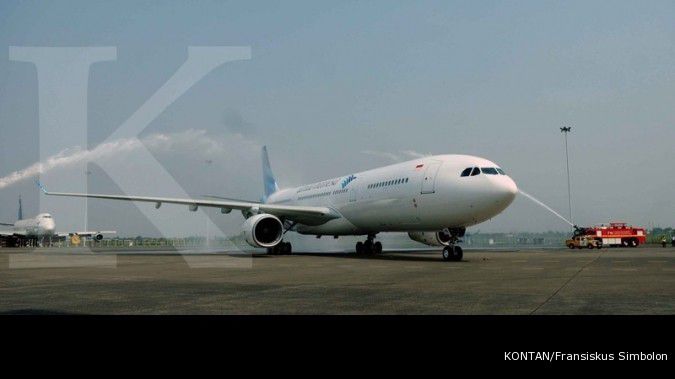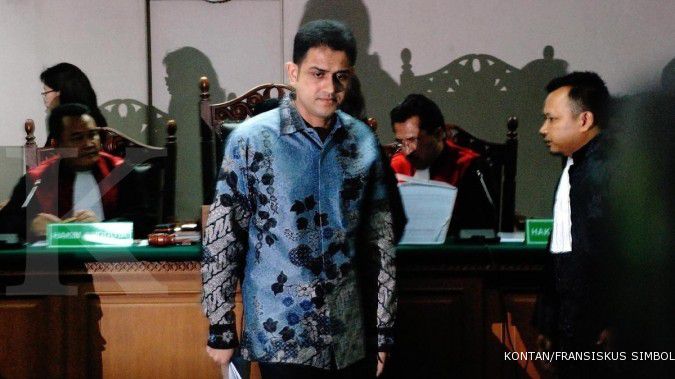JAKARTA. PT Garuda Indonesia (GIAA), buffeted by a capricious exchange rate and hauling an extra load from a business unit, recorded a net loss of US$22 million for the first nine months of the year despite a 12.59 percent year-on-year uplift in operating revenues to $2.68 billion. However, the national flag carrier said that it would conduct “adjustments” in account of the new exchange rate, with analysts pointing out that its growth was still “on track”. “Our financial performance ended in the negative primarily due to exchange rate factors,” Garuda Indonesia spokesman Pudjobroto said.
Bank Indonesia (BI) stated that in the third quarter of the year, the exchange rate sat on average at Rp 10,670 per US dollar, depreciating by 9 percent quarter-to-quarter. In September, the rupiah fell to Rp 11,065 against the dollar as the country’s trade deficit widened. “Meanwhile, a majority of our operational expenses are dollar-denominated,” Pudjobroto added. As of September, Garuda’s operating expenses elevated by 16 percent year-on-year to $2.66 billion. As much as 60 percent of its expenses were related to flight operations. Flight operation expenses touched nearly $1.6 billion, or 20.5 percent higher than during the same period last year. On top of operating expenses, Garuda had to bear a financial cost of $44.3 million during the first nine months of the year, a figure 249 percent higher than the previous year. Nearly 41 percent of its financial costs pertained to long-term loans of $18.1 million — a sharp surge compared to the $952,711 booked during the same period in the previous year. Pudjobroto added that another pressure point for the airline in the third quarter was its subsidiary, PT Citilink Indonesia, which was still in the “development stage”. Citilink is a low-cost carrier spun off by Garuda in July last year. Citilink plies domestic routes to roughly 24 cities across the country, including Jakarta, Medan and Pekanbaru. Indosurya Securities analyst William Surya Wijaya said Garuda should nonetheless hold on to Citilink. Although Citilink was still “at the early development stage” and therefore, was unable to pull in significant income, its “competitive [ticket] prices” was Garuda’s answer in the low-cost carrier category. “Citilink is instrumental to keeping other airlines from raising their prices close to Garuda’s, so that Garuda can maintain its positioning in the premium category,” he said. Other carriers adopting the low-budget strategy are Lion Air and AirAsia. Based on data from Garuda, Citilink carried 384,061 passengers in September, marking a 55.2 percent year-on-year increase. However, William added that the change in the haj quota would also impact Garuda’s business down the line. This year, the Saudi Arabia government has slashed the quota of Indonesian haj pilgrims by approximately 20 percent to around 168,800 pilgrims. The Saudi government had to reduce quotas from every country, including its own, because it was in the midst of expanding the capacity of Al-Haram Mosque in Mecca, where pilgrims gather. Construction activities are expected to continue to 2016.
According to William, Garuda would lose potential operating revenues if the haj quota were to tighten once more. Haj-related flights contributed $71 million to Garuda’s operating revenues, hence charting a 59 percent year-on-year increase when compared to the same period last year. “However, a decrease in haj flights could also lead to a reduction in operating expenses related to operating those flights,” he said. During September 2013, the Garuda Indonesia group carried almost 2 million passengers, or 17 percent more year-on-year. Passengers on its domestic services reached 1.3 million, booking a 13.5 percent annual growth. Meanwhile, Garuda’s international services carried 278,993 passengers, or lower by 1.2 percent year-on-year. (Mariel Grazella, Tassia Sipahutar/
The Jakarta Post)





